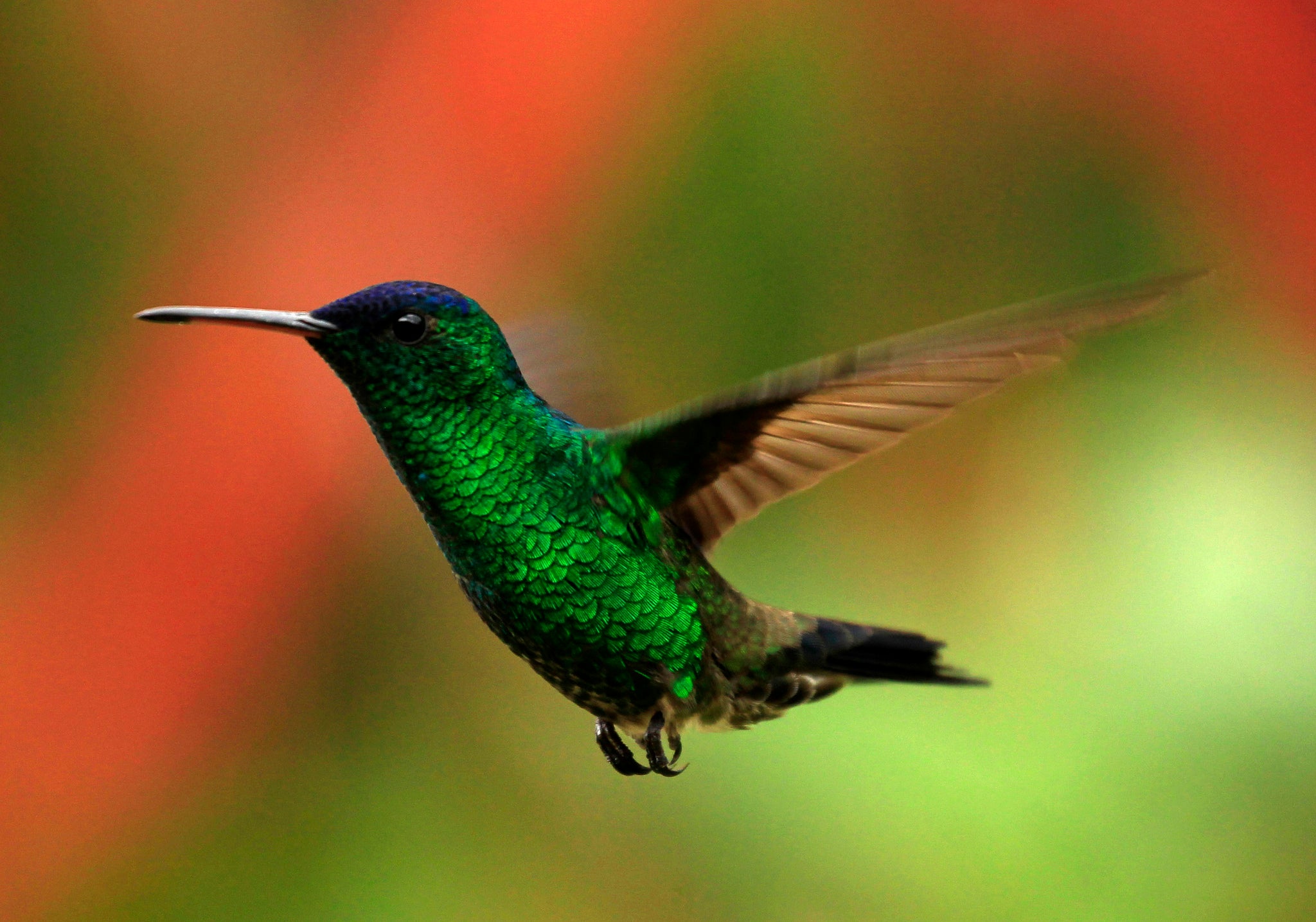Engineers pit hummingbirds against drones in test of flying efficiency
Which are more efficient: feathered hummingbird wings or plastic blades?

Engineers looking to see how the world’s most advanced micro-helicopters compare to the hovering capacity of hummingbirds have concluded that nature still has the upper hand when it comes to micro-flight – but only just.
Research published in the journal Interface compared a 16 gram Black Hornet Nano drone used for surveillance by the British army with hummingbirds that weigh no more than 4 grams, concluding that the best birds were 20 per cent more efficient than the drones.
Specifically the engineers were looking at the issue of efficiency vs drag in lifting apparatus – looking to see if feathered wings were better than slim plastic blades in generating the upward force need to hover.
The hummingbird is the only bird capable of sustained hovering, with the researchers using slow-motion recordings of the animal to measure the exact movement of their wings before ecreating this movement in the lab with wings taken from museum specimens to measure the forces in play.
Although top hummingbird hoverer – a species known as Anna’s hummingbird – was 20 per cent more efficient than the micro-drone, the scientists noted the average hummingbird was pretty much on a par with human engineers’ most advanced mini helicopters.
"This shows that if we design the wings well, we can build drones that hover as efficiently, if not more efficiently, as hummingbirds,” lead author Professor David Lentink of Stanford University told BBC News.
"Clearly we are not even close to hummingbirds in many other design metrics, such as wind gust tolerance, visual flight control through clutter, to name a few. But if we focus on aerodynamic efficiency, we are closer than we perhaps ever imagined possible."
Professor Lentink and his team hope that by studying the exact mechanisms of hummingbird wings they'll further be able to improve the design of miniature drones, perhaps one day matching the birds not just in efficiency but in manoeuvrability too.
Join our commenting forum
Join thought-provoking conversations, follow other Independent readers and see their replies
Comments
Bookmark popover
Removed from bookmarks